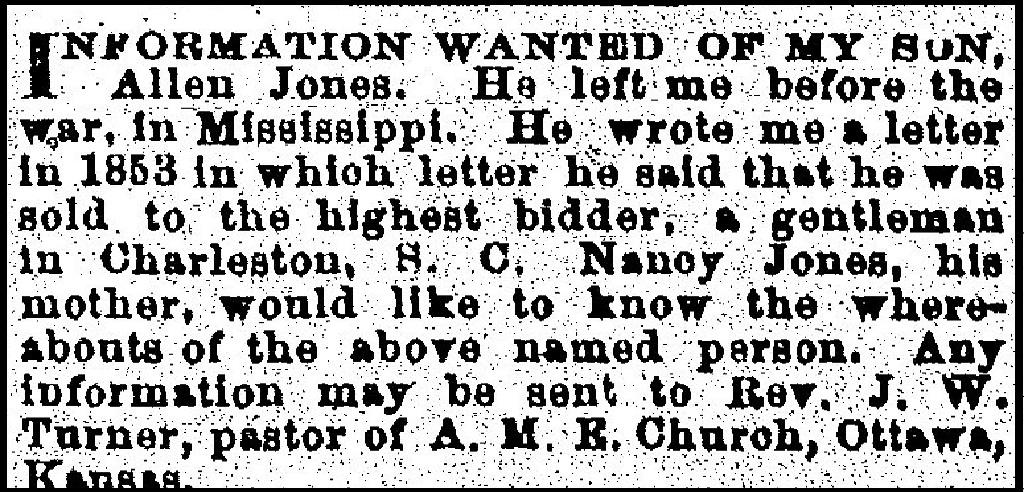A new project, Last Seen: Finding Family After Slavery, illuminates an aspect of slavery in America that historically has received little attention: the destruction of Black families. Last Seen has collected and digitized over 900 “Information Wanted” notices placed in newspapers across the country by African Americans searching for family members lost by sale, flight, or enlistment during the Civil War.
The project offers public access to thousands of advertisements, providing a new lens through which to understand the reality of slavery in America. The collection includes advertisements like the one placed on May 20, 1886, by Nancy Jones in the Christian Recorder of Philadelphia searching for her son, Allen Jones. Her newspaper ad, as did most ads placed by African Americans searching for their lost family members, included his last seen location and his sale information. She explained that she last heard from her son in 1853, when she received a letter from him informing her that he had been sold to the highest bidder at a slave auction in Charleston, S.C. Thirty-three years later, she placed this ad hoping to find her lost son.
In the decades leading up to the Civil War, Southern slaveholders defended slavery against critics’ characterization of the slave trade as barbaric and cruel by claiming that slavery was a benevolent system that benefitted enslaved Africans. Advocates of slavery maintained that slaves were sold locally, families were kept together, and slaves could pick their new owners. Even today, the myth of the benevolent slaveowner persists, and the impact of slavery on Black families still is not well understood.
As EJI reported in Slavery in America, it is estimated that “more than half of all enslaved people in the Upper South were separated from a parent or child, and a third of their marriages were destroyed by forced migration.” The Last Seen project challenges the persistent myth of the benevolent slaveowner and sheds light on the destructive consequences of slavery for Black families.
In EJI’s animated short film, Slavery to Mass Incarceration, Executive Director Bryan Stevenson discusses the impact of slavery in America on Black families:
Slavery in America traumatized and devastated millions of people. Husbands and wives, parents and children, could not protect themselves from being sold away from each other. Enslaved families were separated at an owner’s or auctioneer’s whim, never to see each other again. The Domestic Slave Trade separated nearly half of all enslaved people from their spouses and parents.
Last Seen is a project of the Graduate Program of the Department of History at Villanova University in collaboration with Mother Bethel AME Church.

